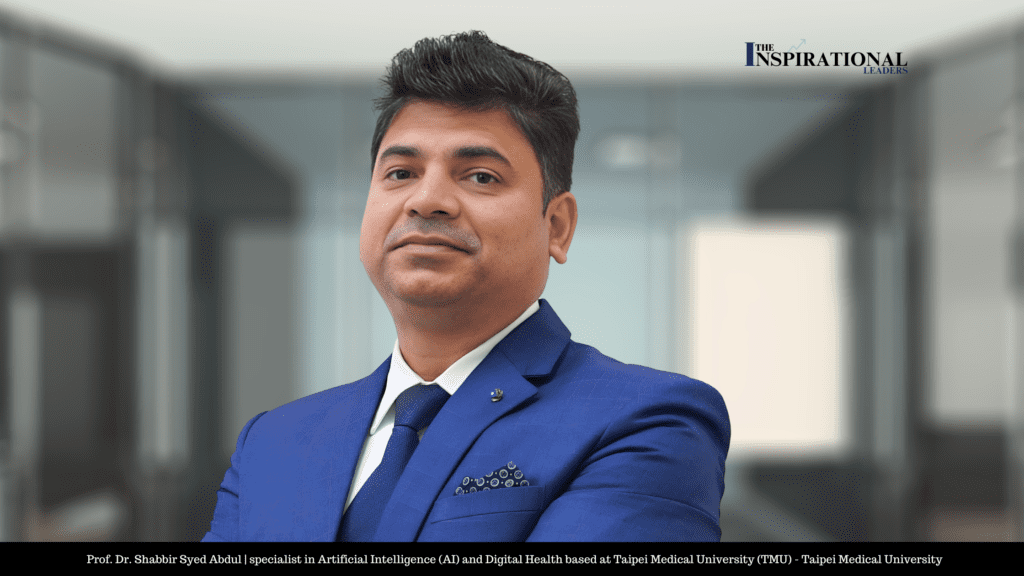Julia De Luca: Bridging Capital, Culture, and Innovation in Latin America’s Tech Frontier
Digital Version In an increasingly interconnected and fast-paced world, leaders who can straddle multiple domains—finance and technology, global and local, innovation and tradition—are not just rare, they’re essential. Julia De Luca, Vice President of Technology for Investment Banking at Itaú BBA, exemplifies a rare combination of strategic insight, cross-cultural understanding, and genuine leadership. Her story is one of resilience, adaptability, and purpose—a Latina leader helping shape the future of Latin America’s tech ecosystem while paving the way for the next generation. With a unique background that spans traditional finance, cutting-edge tech, and institutional investment, Julia brings deep insights and a human-centered perspective to one of the most dynamic markets in the world. As a leading voice in Latin American tech, she’s more than an advisor—she’s a connector, a translator of innovation into investment, and a committed mentor to women in finance and technology. Leadership isn’t just about capital or code—it’s about connection. In every deal, every story, and every bridge built between worlds, I try to leave the door wider open for the next woman walking in. A Journey Fueled by Curiosity and Purpose Julia’s professional journey is defined by bold pivots and a relentless curiosity. Her career began in traditional finance at Gávea Investimentos, where she spent five years in business development and investor relations. There, she was responsible for engaging global institutional clients—endowments, pension funds, and family offices—with the firm’s hedge fund and private equity strategies. “I’ve always been naturally curious and a bit restless — that drive has shaped my journey from the very beginning,” Julia reflects. Her ambition initially pointed toward an MBA abroad, but life had other plans. The unexpected death of her mother marked a turning point in her life. “The MBA didn’t happen, but in hindsight, it led me exactly where I needed to be: Stone.” Joining Stone in 2017, just before its IPO, marked Julia’s first real exposure to the tech ecosystem. “The energy was completely different — younger, faster, more experimental. I was surrounded by developers, product teams, and builders,” she recalls. The experience ignited a passion for technology and taught her to move at the speed of innovation. She immersed herself in learning, recognizing that tech knowledge would be invaluable if she ever returned to finance. That moment came in 2018 when she joined Itaú BBA, one of the largest financial institutions in Latin America. The transition brought her back to the financial world, but now equipped with a deep understanding of the tech sector. “Today, I get to combine the structure and discipline of finance with the dynamism of tech — advising high-growth companies and connecting them with the right investors,” she explains. A Latina Perspective in Global Tech As a Latina navigating and shaping Latin America’s tech ecosystem, Julia offers a rare and powerful lens. “Being a Latina in this space, I bring a deep understanding of our region’s culture and opportunities – and I use that to bridge worlds,” she says. Her role often involves translating between global investors and local startups, creating pathways for capital to flow where it’s most needed and impactful. “I can speak the language of Silicon Valley and Faria Lima alike,” Julia notes. That ability to straddle geographies and cultures makes her a key facilitator in the region’s growth. “Diversity is an asset – it lets me view challenges from different angles. In practice, that means I’m able to spot opportunities others might overlook and build trust on both sides of the table.” Her work underscores the power of representation—not just in being present at the table but in influencing who gets invited, who gets funded, and who gets heard. Driving Tech-Enabled Growth at Itaú BBA At Itaú BBA, Julia plays a critical role in the bank’s strategic focus on technology. “We’ve built a dedicated coverage for tech companies and funds, and because we are a true relationship bank, we’re able to support startups at every stage of their journey,” she explains. From Itaú’s innovation hub, Cubo, to specialized investment banking and commercial teams, the institution has created an ecosystem to nurture technology ventures holistically. “We don’t just provide capital; we offer community and content,” Julia adds. The bank’s tech summit in New York, now in its fifth year, and its presence at events like Web Summit Rio and SXSW demonstrate a commitment to not just investing in, but actively shaping, the regional tech narrative. Julia’s role often sees her working closely with founders navigating pivotal moments — from capital raises and M&A activity to early IPO discussions. “My job is to help them think through financial strategy while connecting them with the broader Itaú platform to back the region’s most promising technology opportunities,” she says. Engaging with Emerging Trends Julia is more than an observer of tech trends—she’s an active participant, guiding investment strategy while sharing insights with the broader ecosystem. “I like to say I’m an optimist with data to back it up – Latin America has so many exciting tech waves unfolding,” she says. From real-time payments and open banking in fintech to emerging opportunities in healthtech, biotech, climate tech, and AI, Julia is constantly engaging with what’s next. “I study these trends for my newsletter, I talk to founders building in these spaces, and I’m involved in deals that align with these sectors.” Her ability to anticipate the future while staying rooted in practical knowledge is what sets her apart. “Staying ahead of emerging trends is both a key responsibility and a personal passion of mine.” I don’t follow trends—I interrogate them. Because the future isn’t built by hype; it’s built by people who ask what problems we still haven’t solved. Navigating Two Worlds: Finance and Technology The intersection of finance and tech is a complex one, often marked by cultural tension: finance values risk management and tradition; tech champions disruption and speed. Julia knows how to navigate this terrain gracefully. Representation, Responsibility, and Community Being featured in a Latina-focused edition of tech leadership is more than a professional




